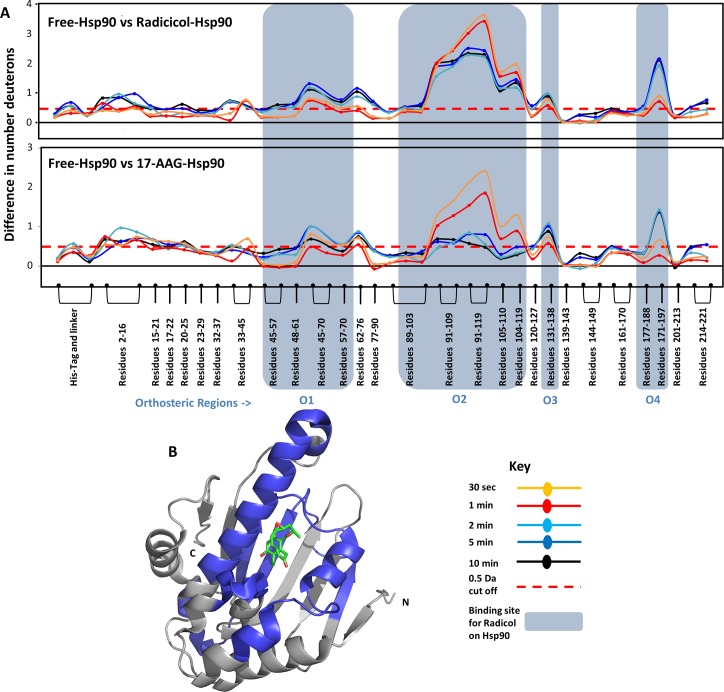Fig 3.
(A) The absolute difference in numbers of deuterons (inferred from difference in mass in Daltons (Da) (y-axis) between the free and ligand bound state is plotted for each pepsin digest fragment listed from the N to C terminus (x-axis) of Hsp90 for each Deuterium exchange time point (t = 0.5, 2, 5, 10 min) in a ‘difference plot’. Shifts in the positive scale represent decreases in deuterium exchange and shifts in the negative scale represent increases in deuterium exchange when compared to the apo-Hsp90. The top panel shows regions showing differences upon Radicicol binding and the bottom panel shows differences upon 17-AAG binding. Regions showing significant differences above a threshold of 0.5 Da (red dashed line) are compared with structural data to identify orthosteric regions. Peptides spanning these ligand binding sites which mediate orthosteric interactions with ligands are marked in blue boxes and are divided into four orthosteric regions marked O1 to O4.Time points of deuterium exchange are colored according to key. (B) Regions showing decreased exchange upon ligand binding (either Radicicol or 17-AAG) are mapped onto the structure of Hsp90 in blue. Radicicol bound at the ligand binding pocket is shown as sticks (PDB ID: 4EGK).

